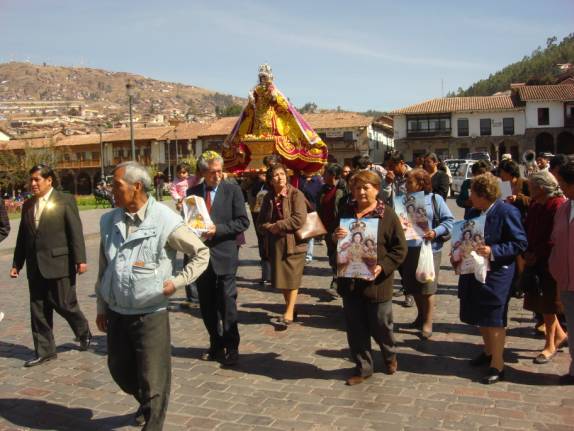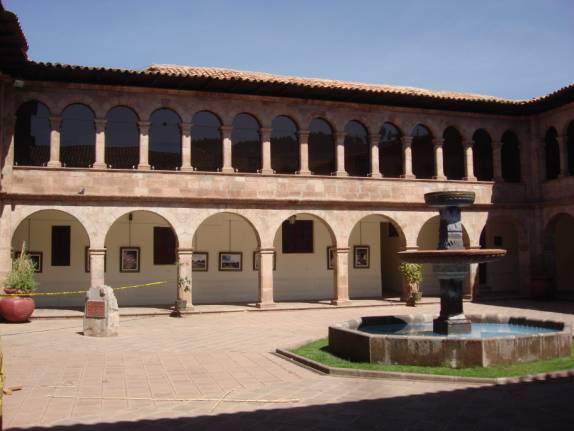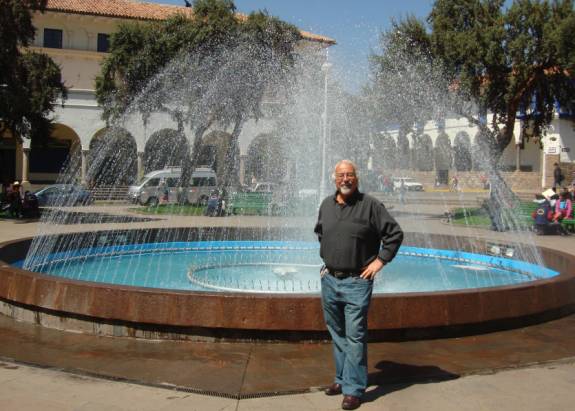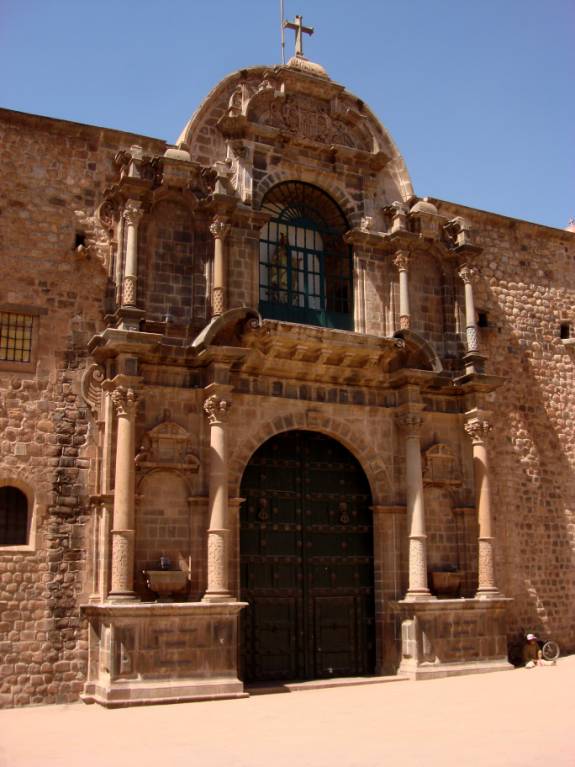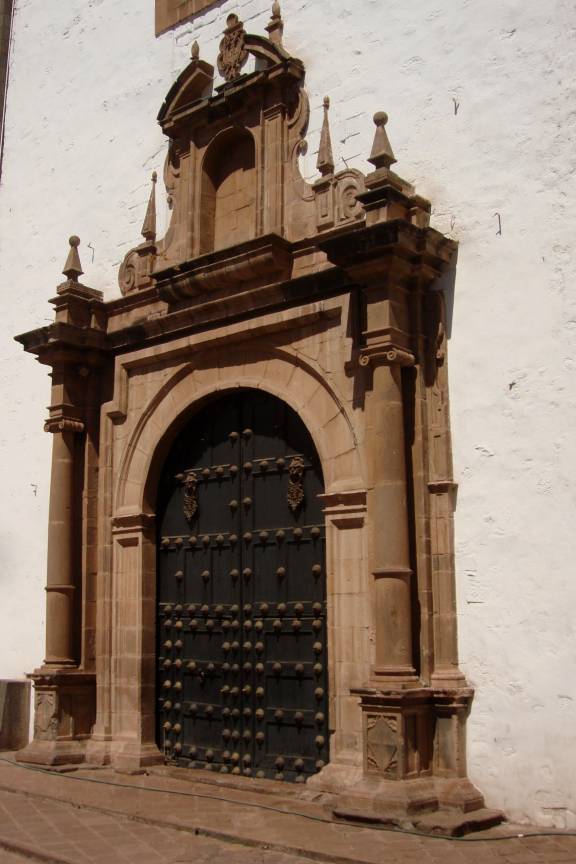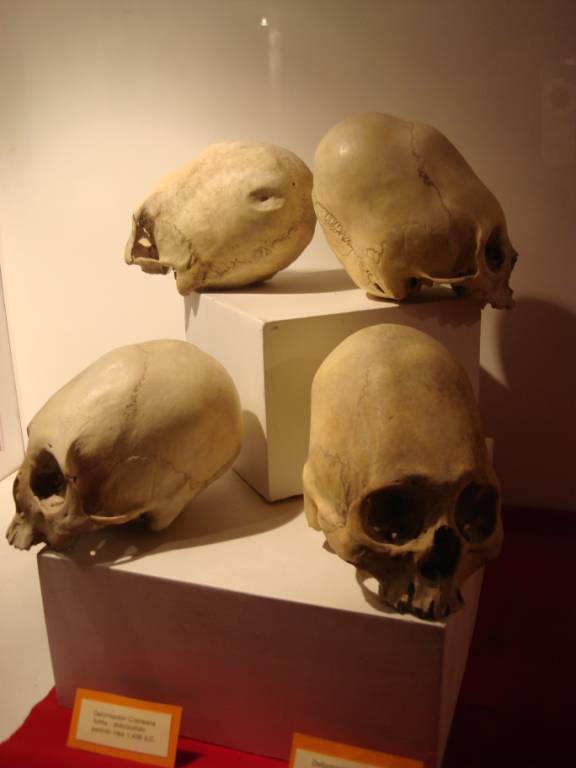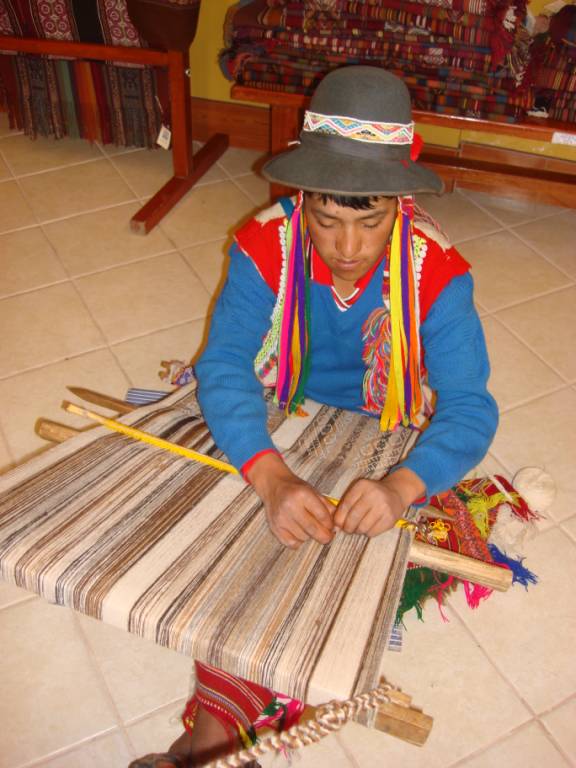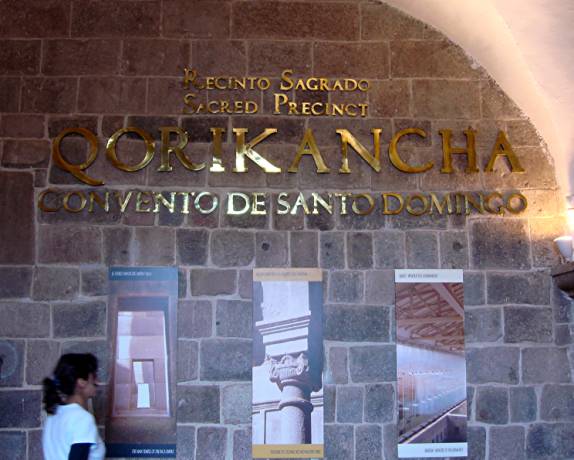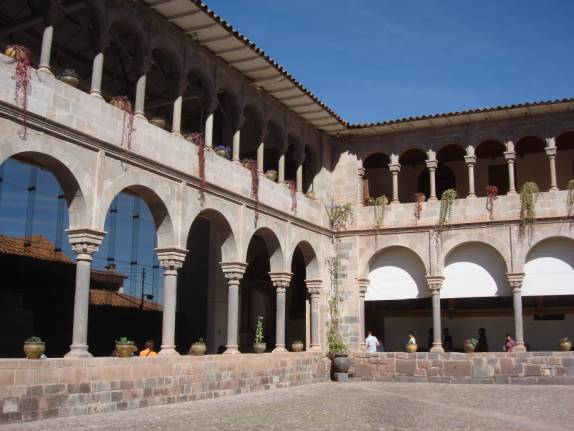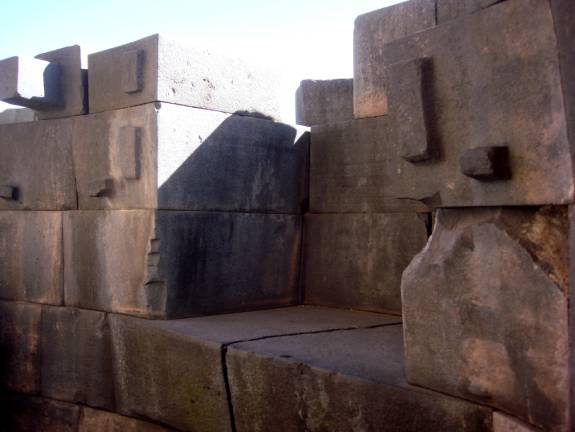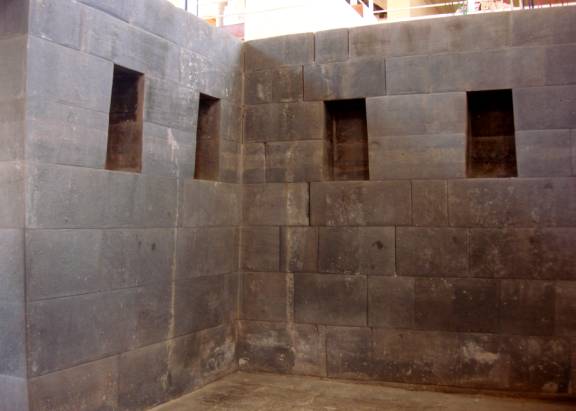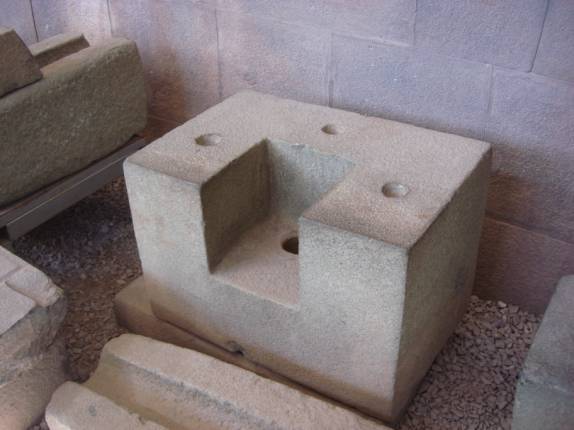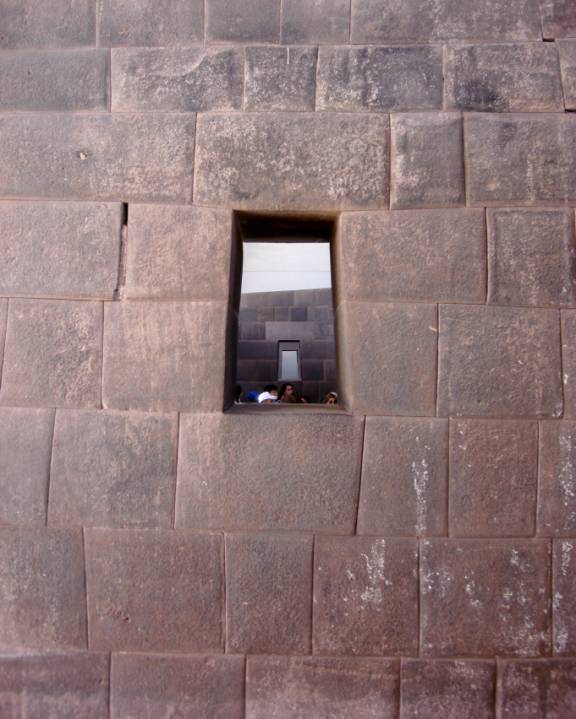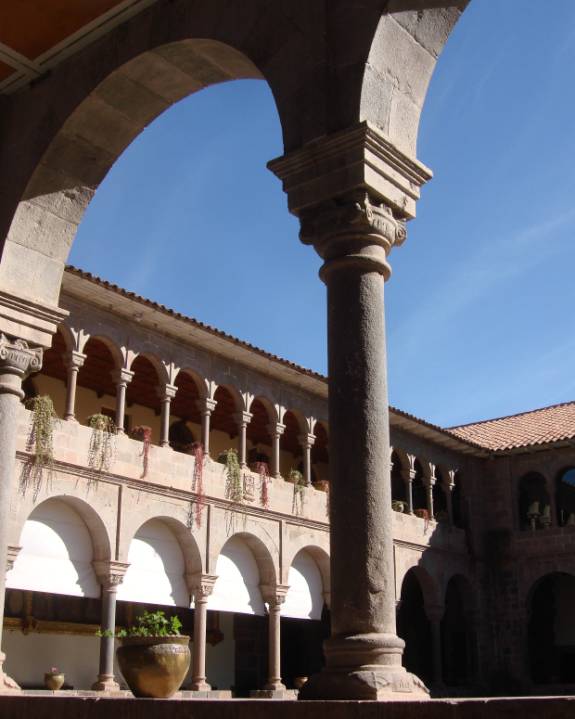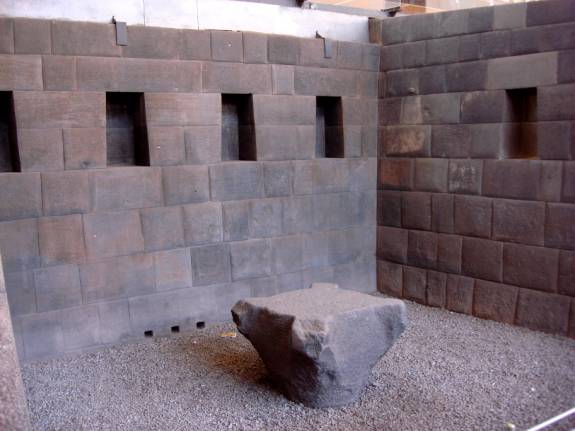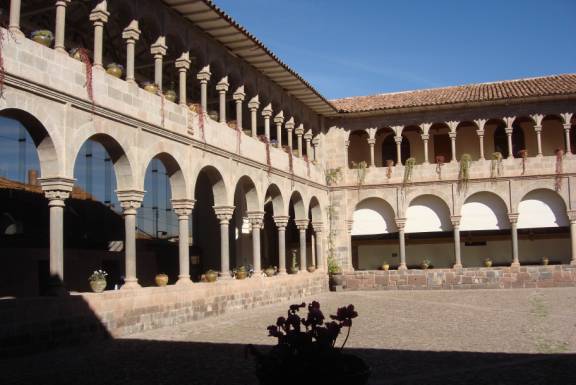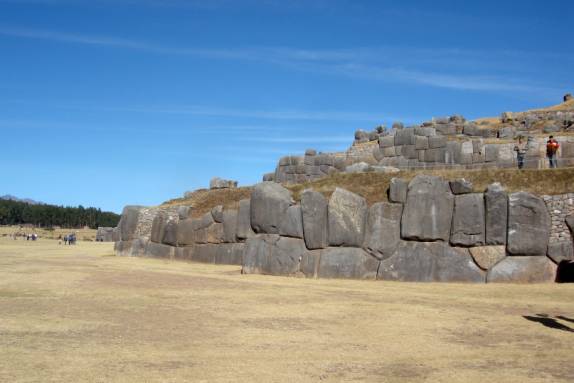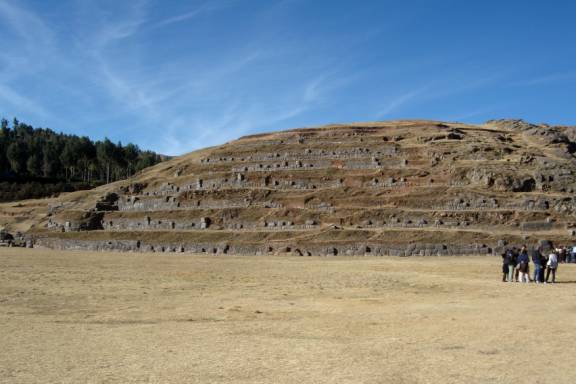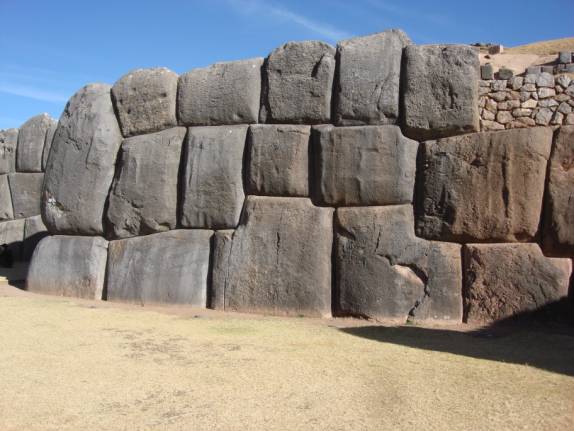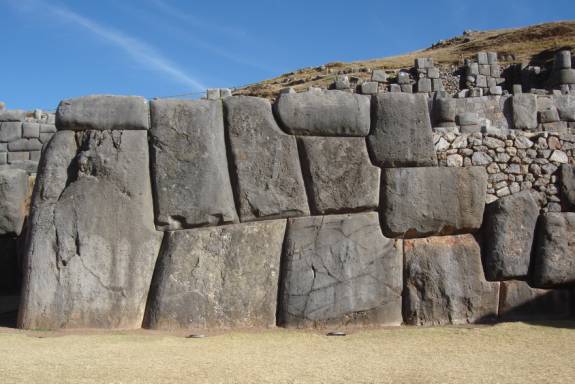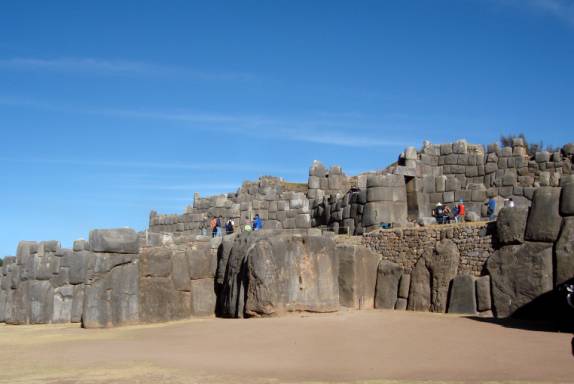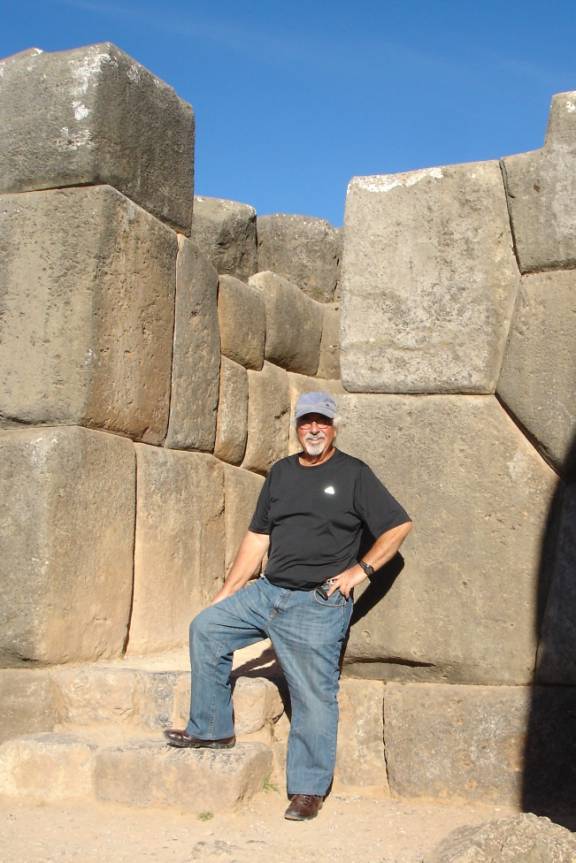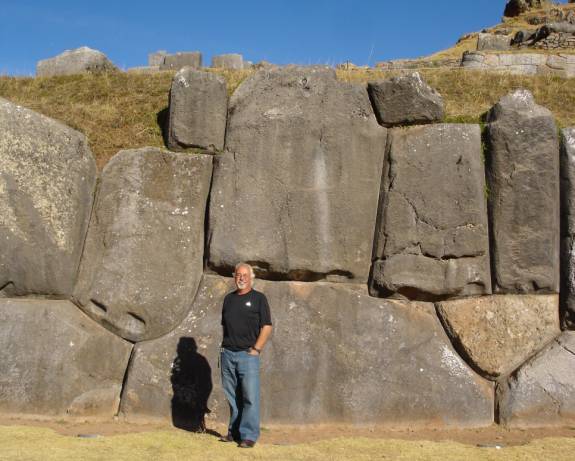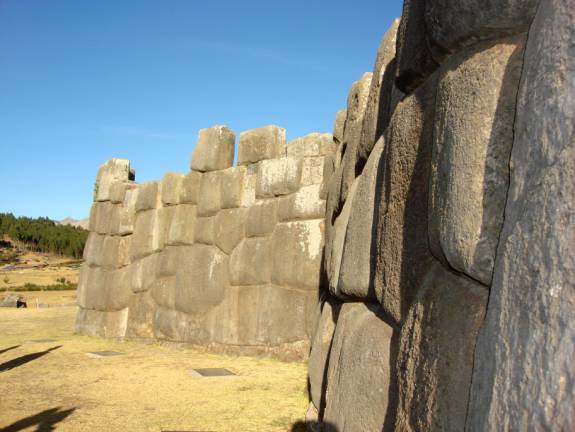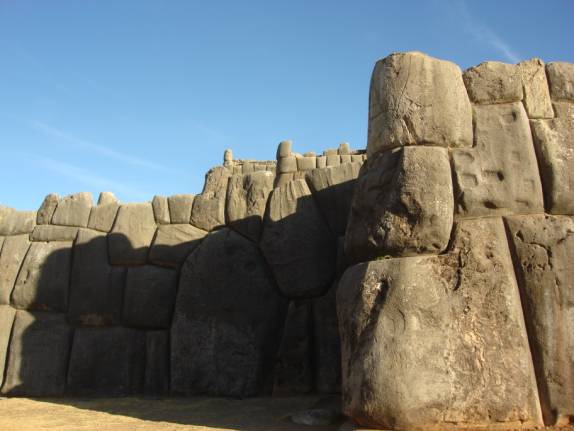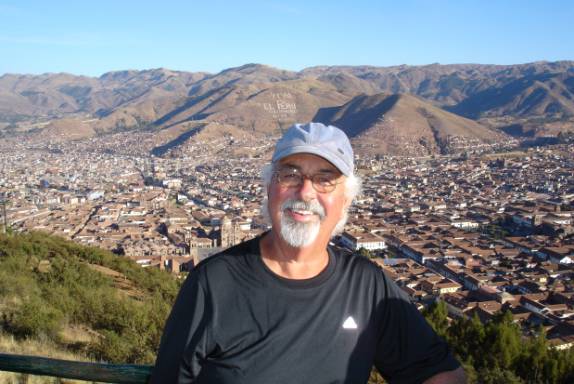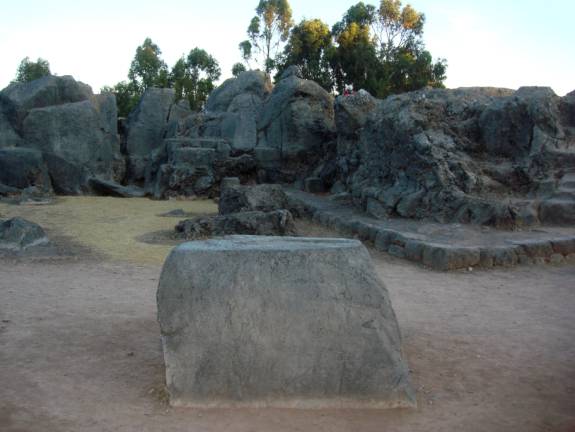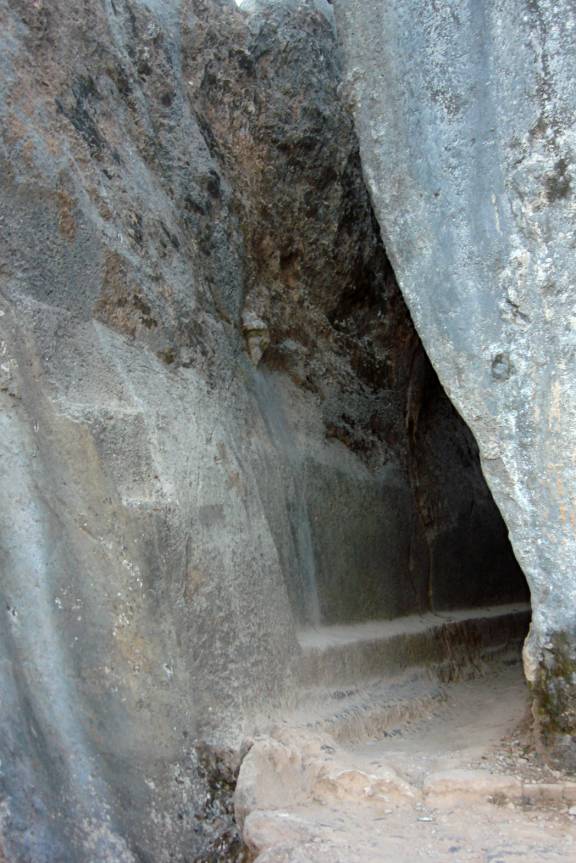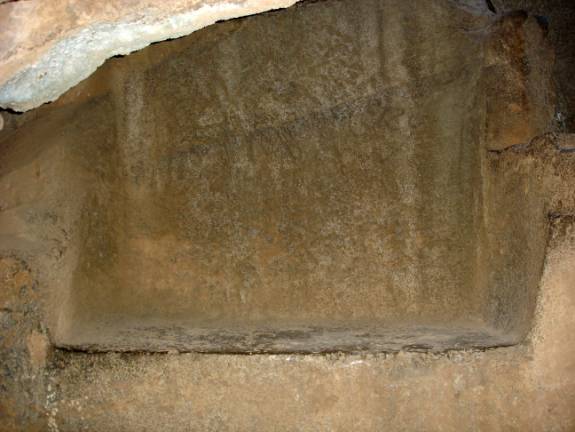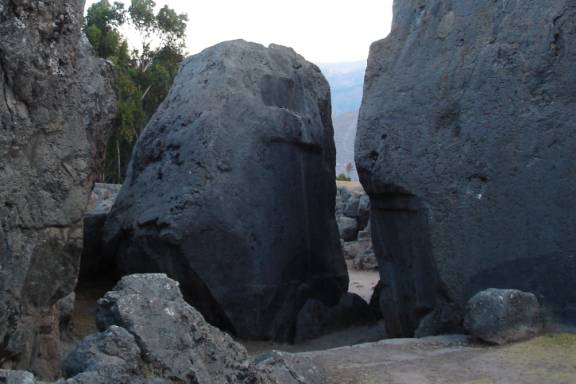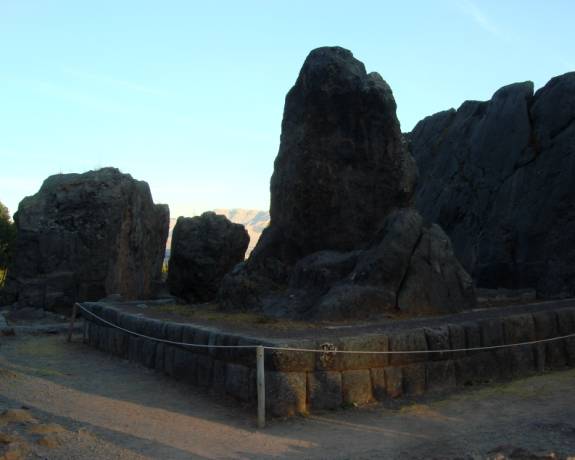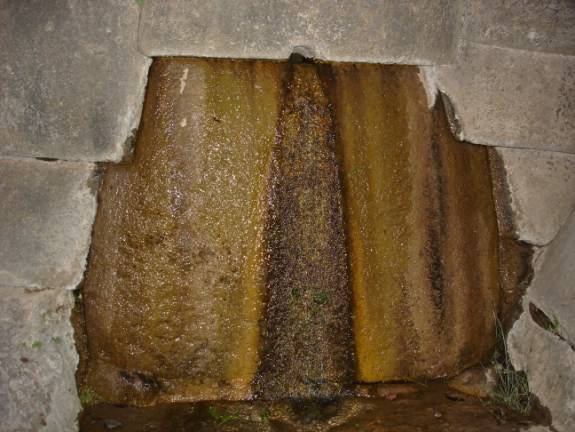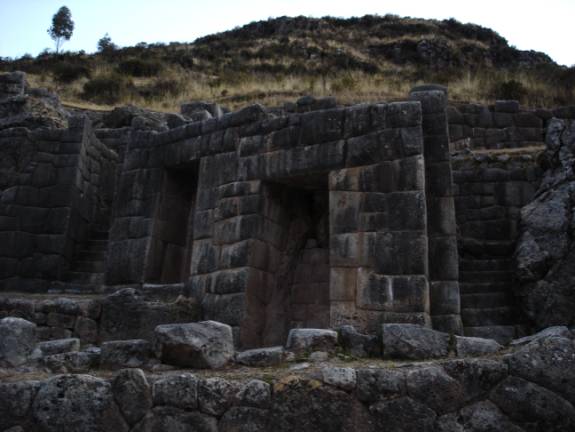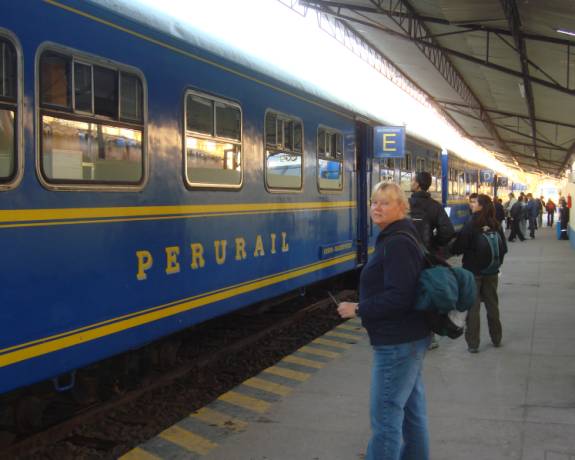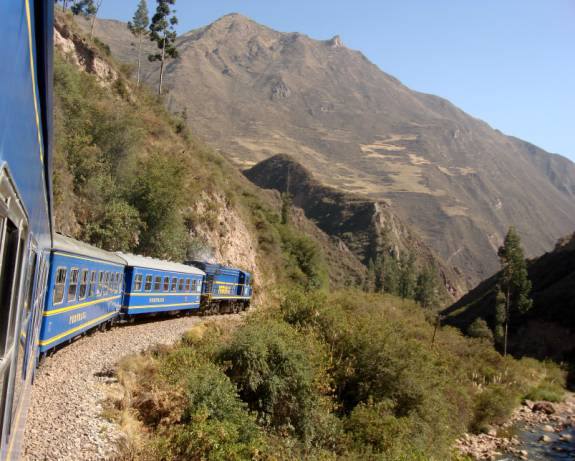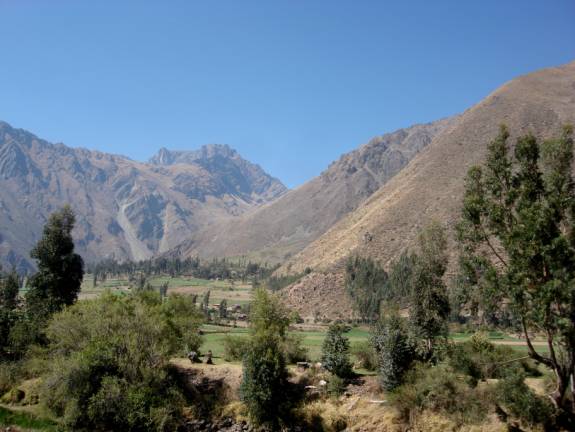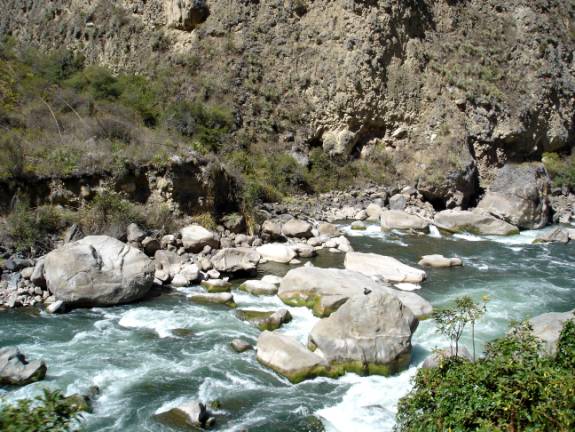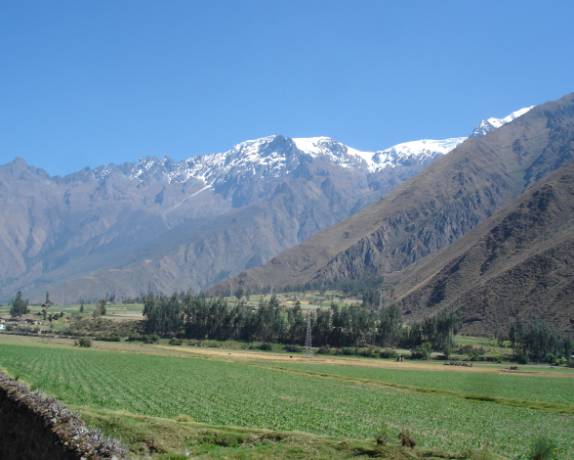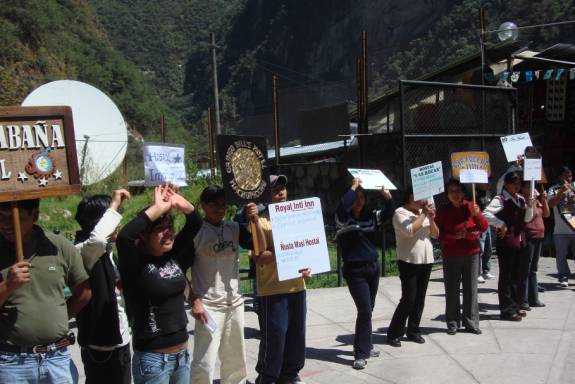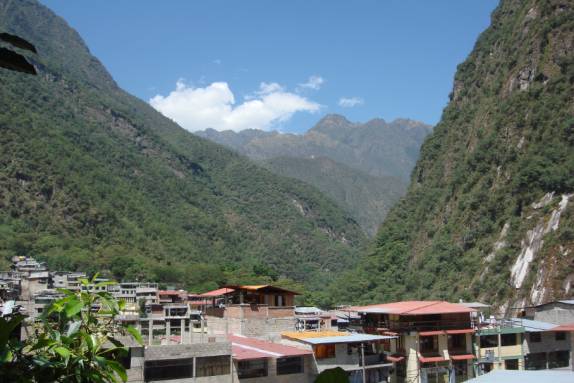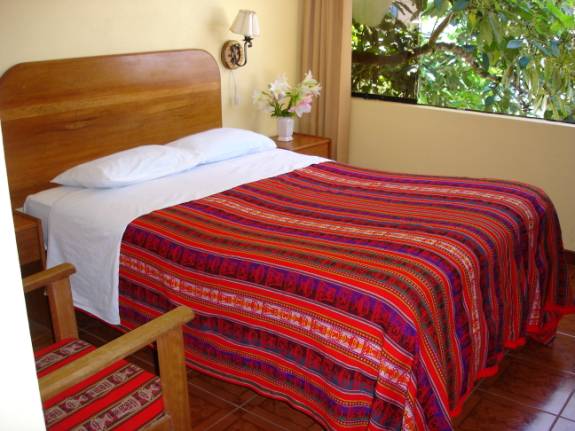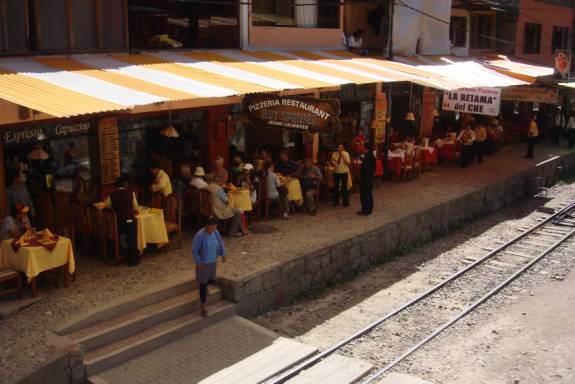|
|
|
|
Site Index:
|
UPDATE#21
08/25
thru 08/26/08
Howdy
Everybody, Adventures
from 2006, 2007, and including this year through 08/24/08 are available on the
website.
We continue now with this latest edition. UPDATE
2008 #21
08/25/08 through 08/26/08. At
last update, we were enjoying our adventure trip to Peru and the exciting region
of Cusco that was once the capitol of the Inca Empire.
08/25/08
MONDAY
CUSCO
After the 6am alarm sounded, we lazily got around to our showers and
breakfast.
When we got down to the central Plaza area, we encountered a group of
folks in an honorable procession carrying the statue of their Catholic religious
patron.
Accompanying them was a municipal-style band that followed in parade
style.
Our tourist ticket included several local museums.
The first on our list, “El Museo Histórico
Regional”
(the history museum), was closed because it was Monday.
The beautiful building was once “La Casa Garcilaso del la Vega”,
the colonial mansion of the renowned Spanish-Inca historian.
Fortunately, it wasn’t far to the Museum of Contemporary Art.
Set in an old colonial mansion near the Plaza Regocijo, the
displays were interesting and enjoyable.
A very nice photographic exhibit was my favorite.
Extensive repairs were underway on the roof of this museum.
In the typical style of this city, the construction was red clay tiles
placed over lashed bamboo and stick support structure.
The fountain at Plaza Regocijo and another small, nearby art
museum entertained us for the next little while.
The ornate stonework of “El Templo
Y Convento De La Merced”
is very decorative in design.
Although totally destroyed in the earthquake of 1650, it was quickly
rebuilt to its present glory.
This ornate side door opens into a courtyard near the entrance to the
Monastery and museum.
In retrospect, we should have paid the additional entrance fee and taken
the extra time to visit the collections inside.
A little bit of a walk south brought us to the underground “Museo
del Sitio de Qoricancha”
(site museum) included in our tourist ticket.
Along with various art and historical objects from Inca and Pre-Inca
cultures, the display of “mummies” especially caught our eye.
As you can see, the mummified bodies were buried in sort of an infantile
or sitting position.
Similar to what we had seen in the Central Highlands site of the Wari
Citadel in Ayacucho, there were several examples of those elongated
skulls.
As you may remember, these distorted heads were the result of
intentional, extremely tight binding during infancy and early childhood. The
abnormally different shape became significantly distended while the youthful
bones were still soft.
People with these unusual head shapes were often given special status and
favored treatment.
As displayed here, several skulls had evidently been operatively opened
up. Was
it for surgery or was it for experimentation?
An upscale textile shop in Cusco sells very high quality weavings that
are hand crafted.
These weavers demonstrate their skill to prospective customers.
It would be best if you have an “extended line of credit” from
your loan institution, as prices might tend to exceed your budget limits.
This waterfall fountain, located near the Mercado
Artesanal
(craft market), recognizes the once powerful Inca Empire and is a small tribute
to its people.
After a very short nap, we returned to Qosqo Tours to begin their “City
Tour”.
Arriving early, we were able to obtain excellent front-row seats on the
small bus departing at 2pm.
Nathalie guided our tour bilingually, although her English was a little
difficult to understand at times.
The first stop was “Qoricancha”.
The “Convento Y Monasterio de Santo Dominico” was constructed over the
site of the Incan Qoricancha Temple.
At the base of the church, the magnificent wall of Qoricancha was
constructed with near perfection and magnificent curvature.
The integrity of the wall was virtually undamaged in the violent
earthquakes that leveled most of the colonial construction in the city.
Admission to the Convento and the museum is not included
in the Boleto Turístico
(tourist ticket); therefore, we had to purchase separate tickets.
The Dominican Order acquired this former Inca Temple site a few years
after the conquest.
Following the extensive looting and confiscation of the wealthy treasures
of the temple, Spanish leader, Francisco Pizarro gave the site and property to
his brother, Juan Pizarro.
During the Battle of Saqsaywaman in 1536, Juan was killed and the
property passed to the Dominicans as bequeathed in his will.
Some of the Inca construction blocks still exist; however, much of the
former glory has been altered or destroyed with the building of the Convent and
Monastery.
Many of the building blocks for the new Catholic Church were brought here
from nearby Inca sites such as Saqsaywaman.
The exact methods remain a mystery, however, it is believed that the Inca
used this site as a sophisticated observatory from which to monitor the
astronomical events.
Some of the area is of actual Inca design and represents impeccable
trapezoidal construction.
The tapered cut-and-fit of these temple blocks is so well done that you
could not even slip a razor blade between the joints.
Because of the precision workmanship and interlocking design features, no
cement was used.
This was the richest temple in the Inca Empire.
Many walls were completely covered with sheets of gold and silver.
The niches may have contained solid gold or silver objects of religious
significance in the worship of the Sun God.
After the Spanish conquered the Inca around 1534, all of the precious
metals of gold and silver were looted, melted down, and sent to Spain.
In the 17th Century, the Catholics already had established
their church here and evidences of their murals painted over plaster have been
protected for display.
The Inca had developed and constructed amazing systems for transporting
water and irrigation to the temple site.
The distinctive, angular shape of window openings is a common feature in
Incan architecture.
Any imperfections that you might see in the joints are due to shifts and
changes caused exclusively by the later construction by the Spaniards, not
because of faulty Inca methods or design.
Numerous paintings representing the Dominican Order of the Catholic faith
are displayed throughout the Convent.
The familiar arches of typically Spanish Colonial design are prevalent
throughout the Catholic construction.
Within the remains of the Inca “Temple of the Sun” and “Temple
of the Moon”, the amazing stones and an altar can be seen.
Imagine the elegance when all of this was adorned with massive amounts of
the finest gold and silver treasures.
…A clear example of Inca trapezoidal architecture…
…A clear example of typical Spanish Colonial architecture…
Our tour incurred a significant delay because one European gal got in a
“snit” with her boyfriend and became separated from the group.
It took much too long to find her.
Believe me, my friends, I’d have left her go on her own way long
before.
The tour proceeded uphill to the site of Saqsaywaman.
The name is often joked about because its pronunciation sounds a little
like “Sexy Woman”.
Of course, properly annunciated, it sounds quite a bit different.
High above the city, this important temple was constructed of huge, cut
boulders quarried from nearby pits.
Although much of the intricate stonework was torn down and later used for
the construction of colonial buildings in Cusco, that which remains is nothing
less than astounding.
The sheer size of the boulders and the major fitting and cutting that
existed boggles the mind.
It might probably be just my idiosyncratic, tainted observation and
strictly personal opinion, however, I am thinking that one of the reasons that
these ancient people may have been able to accomplish so many constructive, time
and labor-intensive projects is that they did NOT have any “Blondes”
to distract them.
Sometimes, I personally find it difficult to think about anything other
than just “being with Judy”.
The site is extensive and requires a lot of climbing and walking at high
altitudes.
The hikes are physically demanding.
Note the many intricate cuts that were required to fit these wall
boulders together.
Remember, also, that no cement was used to bind them together.
This was said to be the largest cut boulder at the site.
The curved end design and trapezoid-angled doorway, with a huge lintel,
indicated a place of great importance and reverence.
The strenuous climb to the top to the Temple resulted in a spectacular
view of the City of Cusco.
Our guide showed us how the entire city area is in the pattern of a
“Puma” or jaguar.
The temple site here is said to resemble the head and teeth of the highly
revered symbol in Inca belief.
The bus was ready to depart for the next location; however, two
inconsiderate gals from Argentina were not on board yet.
Once again, we were annoyed and delayed because they wanted to buy some
souvenirs and that caused them to be late.
My level of tolerance ranks very low for those self-centered persons that
intentionally inconvenience others with their inconsiderate tardiness.
“There, I’ve said it again!”
By the time we arrived at “Quenko”,
the sunlight was waning significantly.
Getting good photo shots was difficult in the subdued light of late
afternoon.
Quenko was an important site to the
Incas.
It is believed to have been the site where the mummification of prominent
Incas took place.
Various altars, tables, and platforms used in processing the mummies were
evident at the site.
Of course, many of the building materials and blocks have been pilfered
to make colonial structures in the city.
Several carved areas within the huge boulders indicate sacred areas that
were closely associated with “Pacha Mamma” (Mother Earth).
This may have been an altar or an area out of the direct sunlight that
may have been used in the process of mummification.
Even some of the passages between huge boulders had been carved with flat
panels cut deep into the rock faces.
Although our tour was supposed to include the site at “Pukapukara”,
our bus just slowed down as it passed by.
The tardiness caused by the “inconsiderates” may have had a role.
The guide simply explained a few facts and dismissed the site as being of
little interest.
“WRONG!”
By the time we arrived at the site of “Tambomachay”, the
sunlight had all but gone behind the hills.
In the dusk, we hiked back along a gravel path to the remains of this
smaller temple area.
Several important fountains and associated stone ceremonial baths were
likely used for making the privileged people “clean” to approach the place
of the gods.
Of course, the exact purposes of all these sites are hypothetical because
the Inca left no written histories.
Everything must be discerned from archaeological findings.
The methods and quality of the construction helps to identify the level
of importance.
This fountain has two portal areas carved into the stones.
The site is sometimes termed as “El Baño
del Inca”
(the Bath of the Inca).
Historians and archaeologists expound differing theories that there may
have been an Incan “water cult” associated with this area.
As we hiked back to the bus, it was already dark out.
The tour bus finally arrived back in Cusco about 7pm.
Were I to take this “city trip” again, I would undertake the tour of
the local sites on our own.
I think that most of the other tours we have taken were good values and
were very enjoyable.
This particular tour is much too rushed at the important Inca sites and
one needs almost a full day to see everything adequately.
Of course, part of the overall problem was caused by the “inconsiderates”.
In Cusco, we enjoyed dinner, changed some more US currency to Peruvian
“Nuevo Soles”, and had more pictures transferred to DVDs.
With our hotel bill paid up through tonight, we rested well in
preparation for our excursion by train to Aguas Calientes and the most famous Inca
site, Machu Picchu. 08/26/08
TUESDAY
CUSCO - AGUAS CALIENTES
At 5am, the alarm awakened us to the still darkness of early morning.
We showered and repacked our luggage intended to be stored here at the
hostal.
In a few days, we will be back here again so we won’t need to carry
everything with us this time.
The Coriwasi Hostal is very accommodating and with a quick call, a young
man came to carry our main luggage to their storage room.
We would only carry in our little backpacks those bare necessities for
our side trip.
After a light breakfast, we took a taxi to the “Estación San Pedro” (train station).
This was a different area station than the main station where we picked
up our tickets several days earlier.
That other location is only for the trains headed south to Puno.
Trains leaving Cusco for Aguas Calientes only depart from “Estación San Pedro” (Saint Peter).
Punctually, at exactly 6:50am, “El Tren” (the train) departed. We had
been assigned to seats 50 and 51.
Although we had been told they were together, they were actually
separate.
Once again, Judy was the good luck charmer and we were fortunate to
switch seats with a woman traveling alone.
This was extra lucky because the two seats facing us were also empty thus
giving us lots more room for our legs.
The left side of the train might have provided a slightly better scenic
advantage, however, we were happy with our viewpoint and content with the extra
legroom.
Two levels of train service depart from this station in Cusco.
“Vista Service” operates a slightly more comfortable seating area.
We were traveling on the “Backpacker Service”.
The cleanliness and comfort of these coaches are very nice and well
maintained.
In addition to a lower ticket price, it was the only service available
for the day we wanted to travel.
The train climbed steeply out of Cusco city through a series of
switchbacks and continued its journey into the mountainous areas.
The weather was nearly perfect to fulfill our desire for endless
sightseeing.
After four hours of travel, we arrived at the new train station in the
town of Aguas Calientes.
In as much as the train is the only mode of transportation here, the
representatives of the various hotels and hostals were eagerly awaiting the
arrival of their guests.
Expecting to see our names, we found only the sign for our hostal without
any mention of us.
The woman from the “Wiracocha Inn” readily escorted us to the
hotel located a bit uphill from here.
The small village of Aguas Calientes (Hot Water) is named for the hot
springs located nearby.
Nestled in the awesome beauty of these mountains, the basic to moderate
facilities provide accommodations and support for the thousands of tourists that
pass through here everyday.
The Hotel Wiracocha is set in a quiet and tranquil area that overlooks a
lovely, babbling stream.
Fortunately, we had arrived on an early train.
For some reason, there was a problem with our reservation.
I presented a printed copy of my confirmation and we were shown a room.
I didn’t particularly like the multiple, single bed arrangement.
Emphasizing that our confirmation promised a bigger bed, the manager
reluctantly showed us to our accepted room, #19.
I guess the later arrivals will have their own problems to deal with.
We had a nice view of the passing stream and the gentle sound of rushing
water was delightfully relaxing.
Our first order of business was to purchase our entrance tickets for
Machu Picchu.
The admission fee must be paid at the central office down here in the
village.
They are not available at the actual site.
One-day tickets now sell for S./122 per person (about $50 US).
Prices have risen sharply over recent years.
When I visited here about 12 years ago, I made a 4-day trek across the
Andes Mountains to Machu Picchu.
At that time, transportation from Cusco to the trailhead, guide service
fees, all food and prepared meals for the four days, tents and camping equipment
with porters to carry them, admission fees to the sites, and train
transportation for the return to Cusco cost me $70 US per person.
Today, that same trip will cost almost $1000 US dollars.
There are now major restrictions as to numbers of persons and various
equipment limits that make it virtually impossible to get a trekking trip during
the dry season without almost a years advance reservations.
Interestingly, cancellations are not available to be rebooked.
The next available slot would not be available until November.
I’m sure glad I was able to experience that trip when it was available,
affordable, and when I was in the kind of physical condition that it required.
Although the capacity restrictions are only in place for the “Inca
Trail” at this time, there is already talk of more restrictions at the site
itself. They have already succeeded in restricting access to the Wayna Picchu
viewpoint to only 400 visitors per day.
Unless you arrive at the gateway very early, you will not make the cutoff
for that day.
At 7am, 200 hikers are permitted to begin; the next 200 are placed on the
waiting list to depart as the original hikers return.
If capacity limits are placed on the overall site, it will become
increasing difficult for the average person to see this magnificent treasure.
If you want to see this fabulous site that is one of the “New Seven
Wonders of the World”, try to do it as soon as you can.
Remember to arrange it for travel in their “dry season”.
In years past, all the trains arrived along this extended platform.
Café after café, restaurant after restaurant compete fiercely for the
tourist dollars.
Prices are grossly inflated and the prudent visitor needs to take care in
choosing and then bargain for a more economical price, which is usually
available.
In times long past, many areas of Peru were made wealthy with gold and
silver mined from the hills, however, much of today’s wealth comes from the
“mining” of lucrative tourist dollars.
I recommend that you always ask if they offer a “Menu del Día” (Menu of the day).
Many times, a much less expensive choice of meals will be readily
available on a separate card.
We chose a nice little café and enjoyed a delightful lunch.
After lunch, we walked up the steep hill to the aguas termales (hot
springs).
Even though we had forgotten to bring our suits, we could have rented
some rather unflattering styles.
I wasn’t feeling as well as I would have liked and Judy didn’t want
to go in the water by herself, so we decided to forgo the pleasure of a nice
“soak” and returned to our hotel for a nap.
With an open window and the gentle lull of the stream below, I slept
soundly for nearly 3 hours.
With darkness settled in, we walked back to the center of the village.
Having thoroughly enjoyed the delicious lunch, Judy wanted to dine at the
same trackside café.
Once again, her choice was very enjoyable.
Knowing that tomorrow would be a necessarily early rising, as well as a
physically demanding day, we retired to the hotel rather early to get all the
rest we could.
TO
BE CONTINUED…SOON…
The next update will be devoted entirely to the wonders of Macchu
Picchu.
Please let us know if you have any special suggestions and thoughts.
Thanks
for allowing us to share our life and adventures with you. Lotsa
Luv, Fred
Reed and Judy Law AMARSE MT40 "AMARSE". is pronounced "AM-ARE-SAY". Our website is: www.amarse.net .
|
|
Fred H. Reed |
www.amarse.net © 2006 2007 2008 2009 2010 2011 |

